Air Quality Data Now Monitored in Sacramento Frontline Neighborhoods
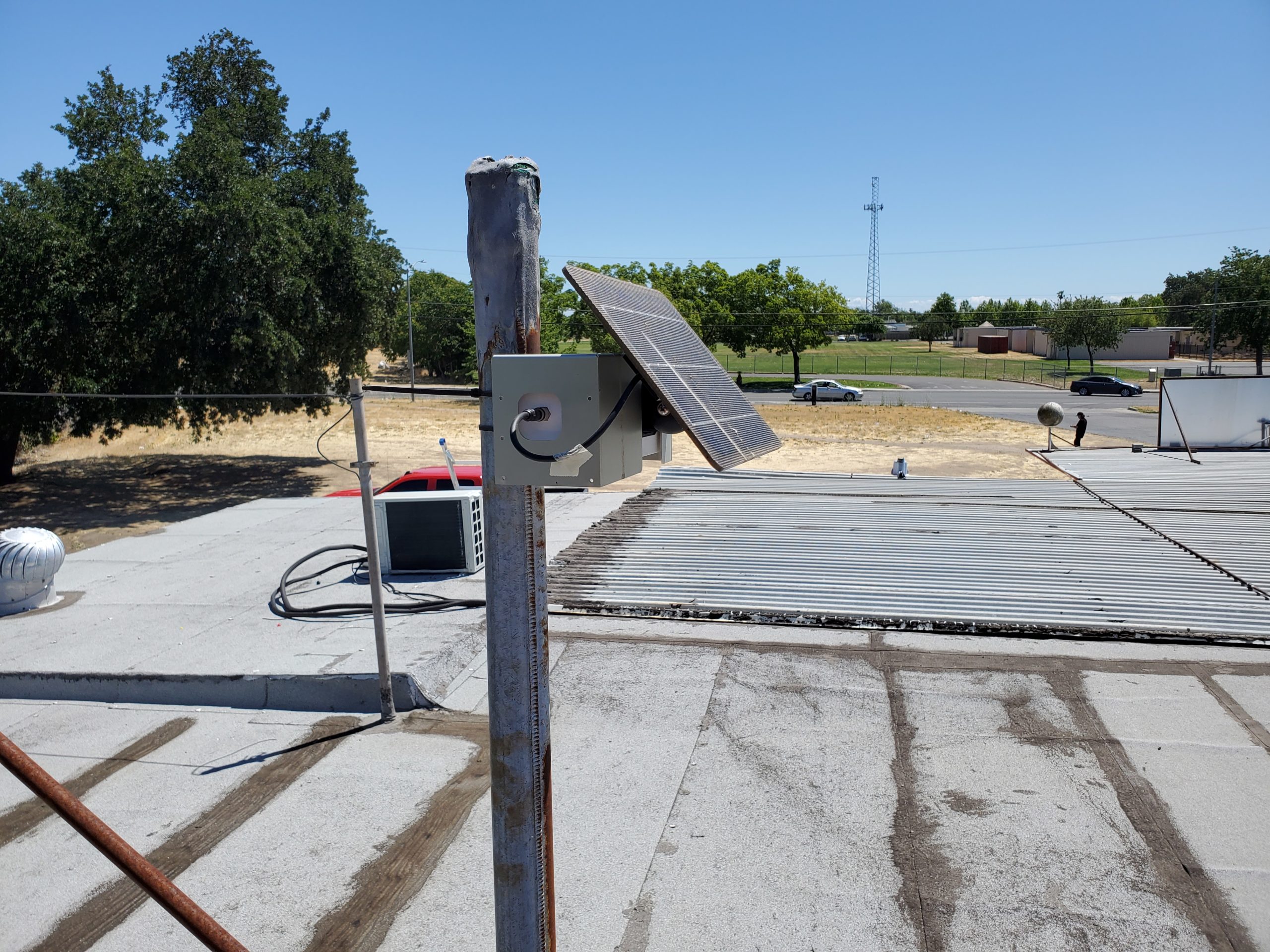
Over 20 air quality monitors being installed on rooftops by community groups in North Sacramento and Oak Park to collect needed data.
SACRAMENTO, CA – JUNE 29, 2021: Efforts to advance environmental justice for frontline Sacramento neighborhoods reached an important milestone with the launch today of a new public data portal that offers live readings from more than 20 rooftop solar-powered air quality monitors. The equipment is part of a larger grant from the California Air Resources Board (CARB), awarded in 2020 to the Sacramento Neighborhoods Activating on Air Quality coalition (SNAAQ).
“Sacramento suffers from serious air quality and public health challenges,” said Patrick Guild, Chief Operating Officer of Breathe California Sacramento Region. “But there are some neighborhoods like North Sacramento and Oak Park that have long been air monitoring ‘deserts’ and we have very little understanding of how poor the air quality may be for residents living in those communities.”
CARB’s Community Air Protection program is meant to help residents of high pollution-burden communities better understand air quality conditions at a block-by-block level and to address environmental injustices. The rooftop monitors measure particulate matter (PM 2.5) and NOx, two types of pollution that cause adverse health impacts that disproportionately fall on communities of color who generally live where pollution concentrations are highest. The new air monitoring equipment is now collecting and transferring data to a public portal, giving residents and advocates a much better understanding of the conditions in these neighborhoods. The data will be evaluated and ultimately will help residents determine future actions and needed investments.
“I think about the generations before and after me, from a researcher’s point of view, and I wonder how many have asthma, allergies, and other health conditions based on factors from their zip codes,” said Nykchasia S. Scott, MSSW, a North Sacramento resident and part of the all-resident committee who determined air monitor locations.
The SNAAQ coalition is comprised of area nonprofits Valley Vision, WALKSacramento, Breathe California Sacramento Region, and Green Tech Education, in partnership with neighborhood residents and clean air advocates who are working together to identify priorities for action that could likely include securing additional funding for clean air projects in our local communities and advocating for new statewide policies and regulations that reduce air pollution.
“This project is fundamentally about ensuring that all residents in our communities are afforded the basic rights to live, work, go to school, play, and pray in a safe, healthy, and clean environment,” said Kiara Reed, Executive Director of WALKSacramento. “We are providing the tools and information that these frontline communities need to adequately and proactively address air quality concerns in their own neighborhoods.”
###
About Valley Vision: For more than 25 years Valley Vision has used research to help governments, businesses, foundations and community groups better understand the issues facing our region. We believe that knowing and understanding the facts is the best way to establish a common working foundation for collaborative problem-solving. That’s why Valley Vision conducts, produces and interprets research including scientific public opinion polls, focus groups, community needs assessments, best practice studies and other research tools to bring to light the information local leaders need to improve our communities.
About WALKSacramento: WALKSacramento is a nonprofit planning and advocacy organization that improves quality of life and health equity in the Sacramento Region through community-centered policy and systems change in land use, transportation, and community development. For the last 20 years, WALKSacramento has worked closely with residents and community partners in institutionally underserved communities to empower community voices and co-create healthier, more equitable, and sustainable neighborhoods for all.
About Breathe California Sacramento Region: Breathe California Sacramento Region is an air quality and tobacco cessation-focused nonprofit that has served Sacramento for more than 100 years. Recognizing the significant impact that lung health has on the overall health of all communities in the Capital Region, Breathe has prioritized two significant areas of lung health in its mission: improving environmental air quality and eliminating commercial tobacco use through meaningful community engagement, enriching educational efforts, strategic partnerships, innovative programming, and effective advocacy.
About Green Tech Education: Established in 2008, Green Tech is committed to providing career technical education, job creation, job training, and entrepreneurial opportunities in the green economic sector. The program serves as a critical economic development resource for youth from underprivileged backgrounds. Green Tech is charged with simultaneously developing clean energy workforce skills and reversing the negative human impact on our environment.
Improving Air Quality in North Sacramento and Oak Park
Across the Sacramento region, community leaders and organizations are collaborating to achieve Environmental Justice, defined by local advocates as “the basic right of people to live, work, go to school, play, and pray in a safe, healthy, and clean environment.” Valley Vision is excited to be part of these efforts as we advance a new project to improve air quality in two frontline communities in Sacramento County.
Much of this momentum can be attributed to recent action at the State level. In 2017, Assembly Bill 617 was signed into law, which created the Community Air Protection Program run by the California Air Resources Board (CARB). The Community Air Protection Program empowers California’s most polluted communities to monitor their air quality and guide investments to reduce harmful emissions and improve public health in frontline neighborhoods. Valley Vision has been active in AB 617 advocacy since the legislation was signed by Governor Brown in 2017, including a strong effort in early 2018 to ensure Sacramento’s inclusion in the program, but more recently our work took on a new and critical purpose.
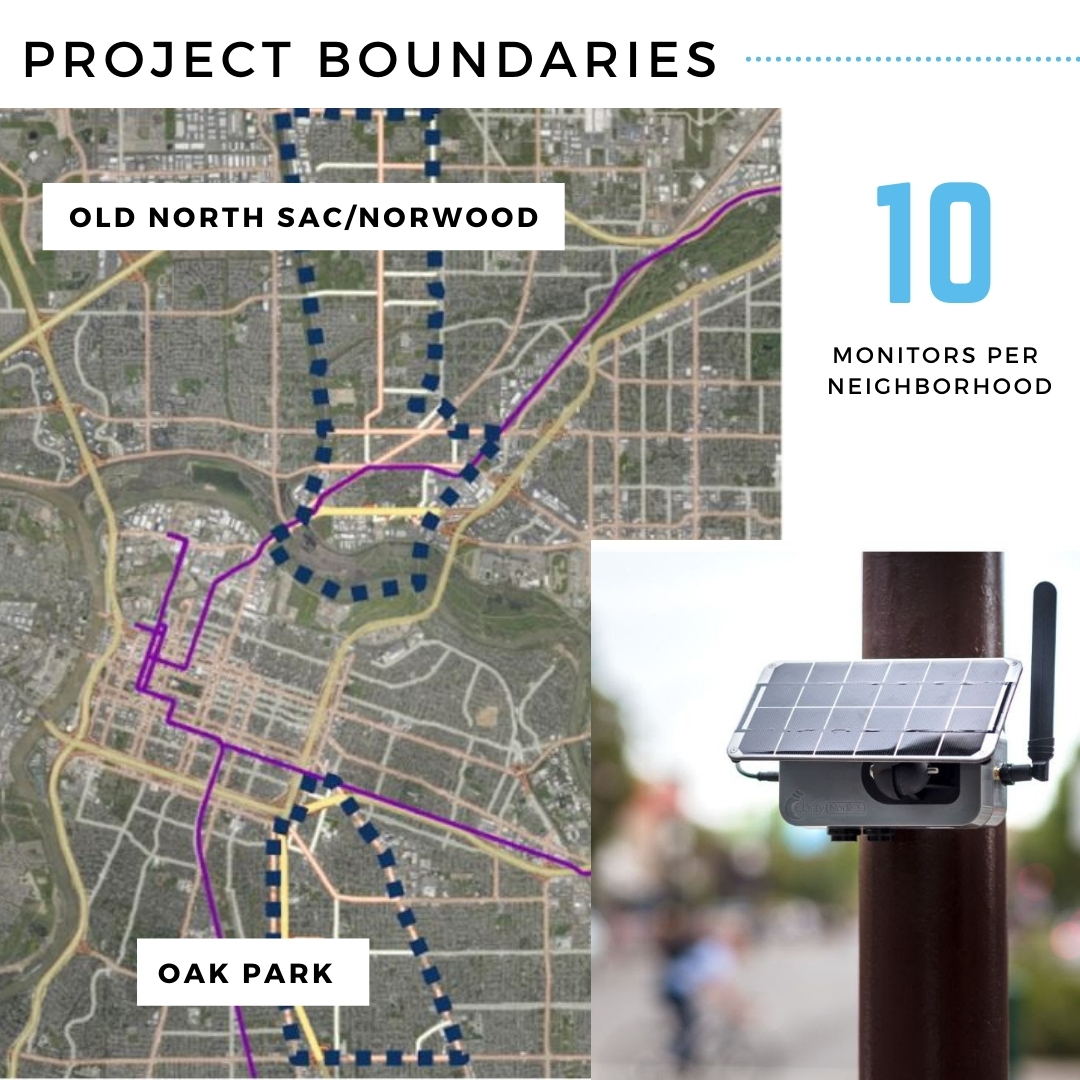
The work is focused on North Sacramento and Oak Park.
Last year, CARB awarded a two-year Community Air Grant to a group of local nonprofit organizations – Valley Vision, WALKSacramento, Breathe CA Sacramento Region, and Green Tech Education – to help the North Sacramento/Norwood and Oak Park neighborhoods monitor their air, understand how air quality impacts health, and develop a plan to reduce exposure to air pollution. Both of these communities are formerly redlined and underinvested air monitoring “deserts” with little available pollution data, and both have been nominated by the Sac Metro Air District for formal consideration by CARB as priority communities for pollution reduction programs.
The purpose of AB 617 is to empower communities to identify their own solutions in achieving better air quality, and our project centers on supplying the tools and resources for residents to do just that. To this end, our work is guided by a Project Advisory Committee (PAC) of 13 community members and technical experts. A majority of PAC members are eligible to be paid for their participation – a best practice for those seeking meaningful community engagement. You can learn more about the PAC on the project web page.
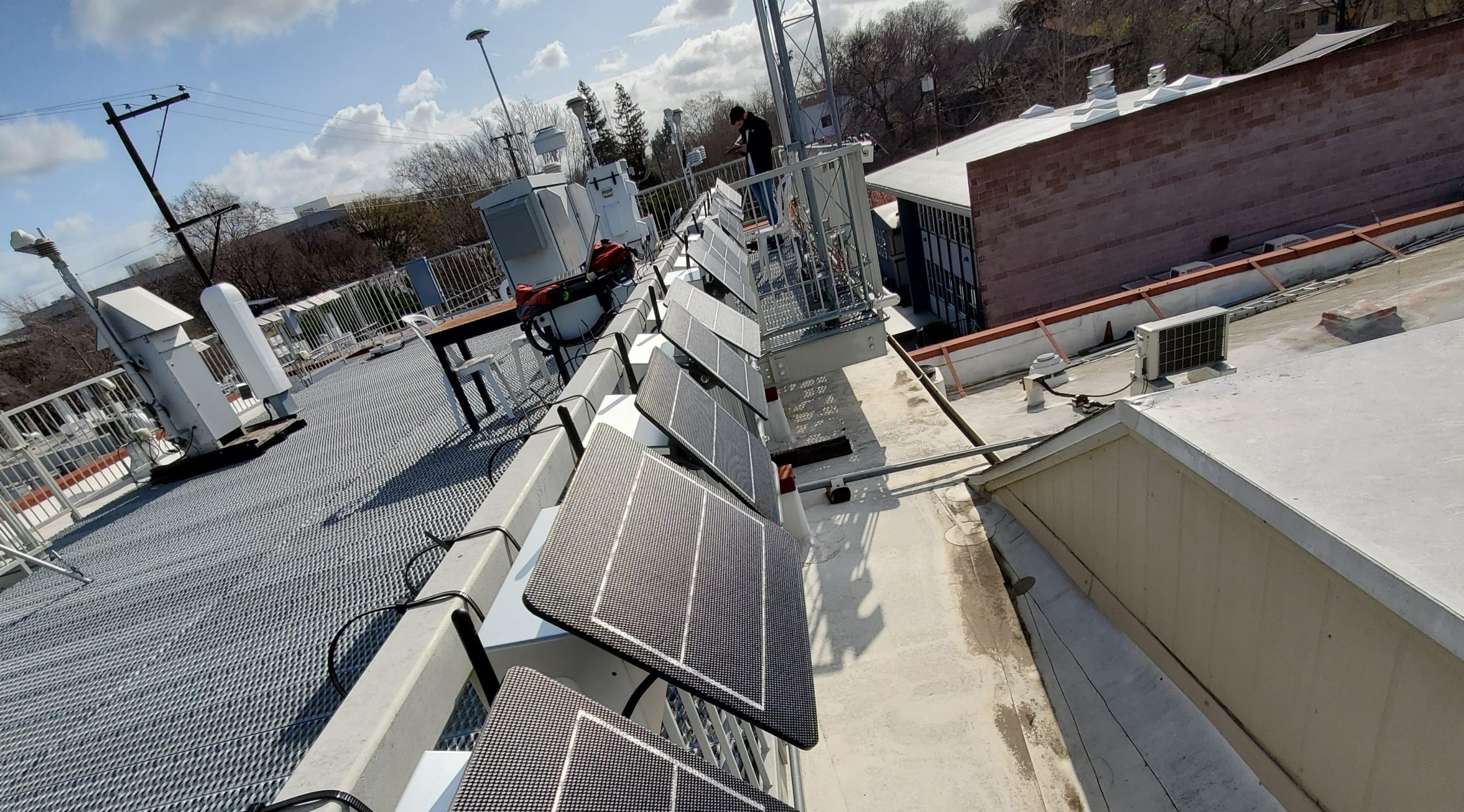
Our next major milestone is placing 20 Clarity Node-S air monitors (10 in each neighborhood) in locations determined by residents, and creating a public data portal where people can access real-time emissions information. Led by WALKSacramento, the team has already hosted four public listening sessions to seek community input, with live translation offered in Spanish, Vietnamese, and Hmong, and put out a multilingual survey to gather information from residents about priority locations for the air monitors to be placed. We are currently working with our PAC to review the dozens of applications that came in from both neighborhoods to determine which residents are eligible and interested in making these important siting decisions. Of course, residents who participate are being offered stipends of $75 per meeting attended.
The work of Sacramento Neighborhoods Activating on Air Quality will last through March 2022, with the following milestones:

As you can see, we’ve got our work cut out for us. Once the two air monitoring networks are deployed in locations determined by residents, we are funded to continue working with community members on an educational curriculum to ensure shared understanding of air quality and its effects on public health, further community workshops and planning efforts to identify community-led solutions, a Hackathon to begin to develop technological tools, and finally a Community Air Action Plan which can be elevated to the CA Air Resources Board to secure resources and to enforce new rules in line with community priorities.
Overall, we believe that the resources and tools that we are bringing to the table will help residents move the needle on public health in our region’s frontline neighborhoods. Especially in the age of COVID-19, it is absolutely critical that we address environmental and health disparities by empowering communities with real decision-making power, and do it in a transparent and equitable manner.
If you have any feedback to share or are interested in partnering in this work, please reach out by emailing adrian.rehn@valleyvision.org! To stay up to date with our work to improve regional air quality, subscribe to Valley Vision’s “Cleaner Air News” email newsletter!
Adrian Rehn is a Valley Vision Project Leader overseeing the Cleaner Air Partnership, Sacramento Neighborhoods Activating on Air Quality, and Valley Vision’s online communications.
Until We Meet Again
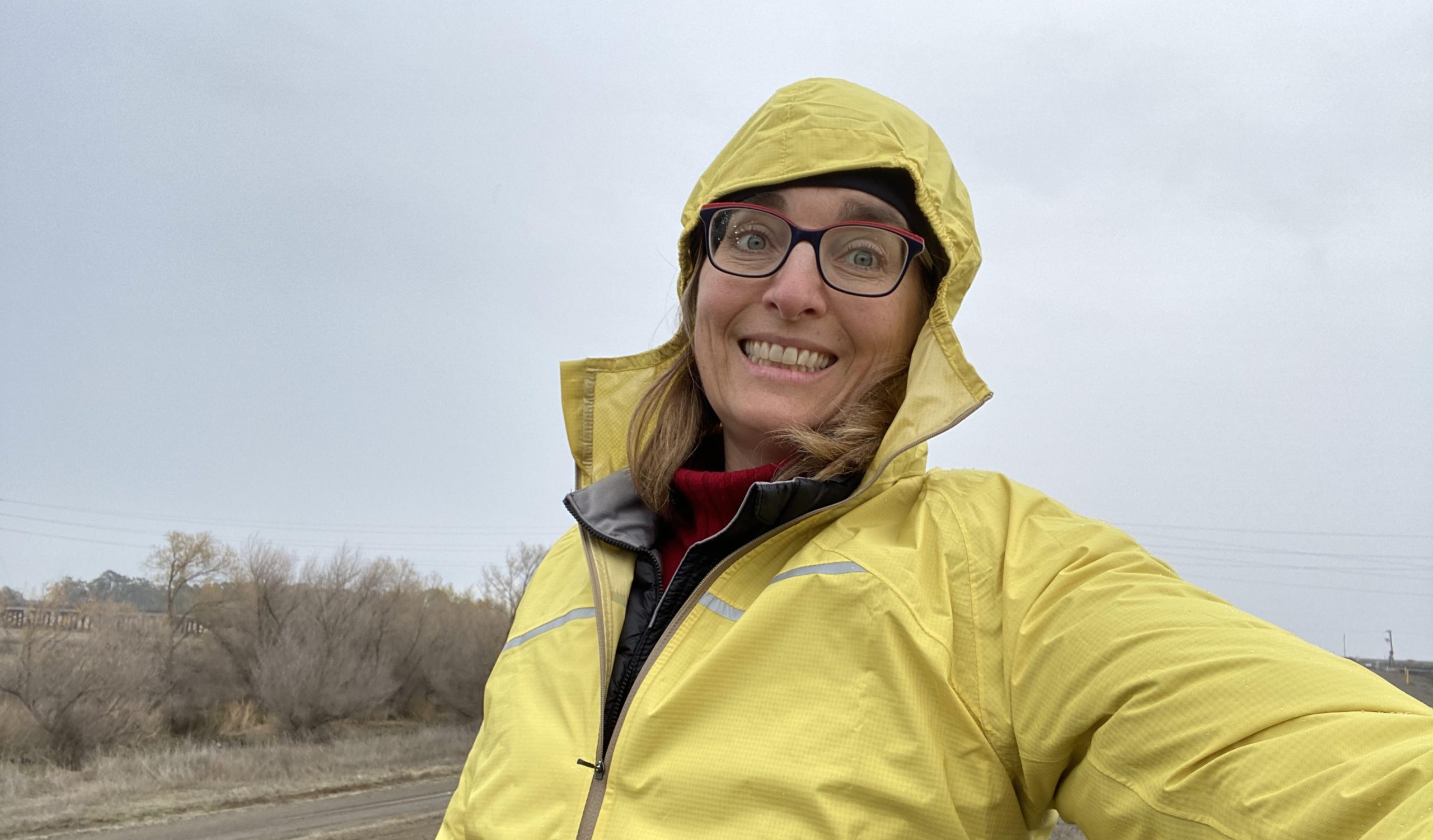
The farewell blog post is a Valley Vision tradition – and a daunting one, now that I’m faced with it myself. My work with Valley Vision, which ends on Friday, includes the last six-and-a-half years as a consultant and employee as well as the decade prior to that (back to about 2004) working as a partner with Valley Vision while at UC Davis and SARTA — spanning, altogether, more than fifteen of the organization’s twenty-five-plus years. How to bid all that work, and all the friends and colleagues I’ve made, farewell in a short blog?
Perhaps by noting that it’s about the work. When we’re fortunate in the work we do, it becomes the embodiment of mission and purpose, and gives meaning to our days – which is what drives us all, at both the individual and the organizational levels, whether in for-profit, not-for-profit, or public service. It’s important to be true to the work. In my two decades here, I’ve done work that’s focused on supporting tech startup companies and the vital contributions of the innovation economy to any region’s economic health and resilience, and I’ve also done work focused on bringing a range of perspectives together around the tough, contentious challenges facing our region. I have been so fortunate to find meaning, purpose, challenge, and reward in all of that work.
And by adding that of course it’s also about the people. The work is only possible because people do it. People show up every day, working mostly together and sometimes at cross purposes; mostly with decent communication and sometimes without; hopefully (but not always) from a basis of trust and with the understanding that everyone is trying to do the best she or he can. And through all that, we understand each other, build friendships, and have fun with each other while also occasionally becoming frustrated by each other. The two decades I’ve been in the Capital Region are the longest I’ve lived anywhere, and all the lines in my life have blurred: my work colleagues have become personal friends; my parent friends have become work friends, my “Davis” friends have become “Capital region” friends, and more. As an introvert and someone who entered working life with bright lines between “work” and “personal,” the blurring of those boundaries has sometimes felt awkward, and has without exception been rewarding.
It’s also about the partnerships. In my experience, when people build partnerships in order to get the work done, the work gets done better. Within a single organization or between several, the ability to find common ground, build a shared agenda, understand what you can each contribute to reaching the goal, and then work together from a basis of trust to do that, while keeping a lid on politics, competition and divisiveness — that’s the sweet spot. That’s the spot I’ve been fortunate to find so often in my work here, whether with Valley Vision, in my own consulting, at SARTA, or at UC Davis. It’s the sweet spot I look forward to continuing to find in what’s ahead.
These are some of the things I’ll take with me when I go, and for which I’m grateful to all my colleagues and friends over all of these years.
So, where am I going, anyway? Thanks to luck, timing, and the ability to leverage so much of what I’ve done and learned in the Capital Region in these years, I’m moving on to become the Senior Vice President of Market Transformation at the Los Angeles Cleantech Incubator (LACI). I’ll help to advance and accelerate the development and deployment of clean technologies of all types, with an emphasis on transportation, energy, and sustainable cities. This new role is exciting because it’s a chance to “live my values” and focus my professional energies on the climate crisis as I’ve hoped to do. It’s also exciting because it joins my prior work with startups and innovation in my SARTA and UC Davis years with my recent work with multi-sector partnerships and policy levers in my Valley Vision years.
So in the end, even though my new work won’t be in this region, I’m only able to do it because of this region. And Valley Vision — its mission, team, Board, regional partners — is where so much of the work, people, and partnerships of these two decades has been centered. To all my Valley Vision colleagues and partners over the years, thank you for so many opportunities, and for all your efforts, wisdom, and friendship.
Meg Arnold has served in several roles during her years at Valley Vision – most recently as Strategic Advisor. She can be reached at meg@gsdconsulting.net.
New Greater Sacramento Region Comprehensive Economic Development Strategy (CEDS) Approved by U.S. Economic Development Administration
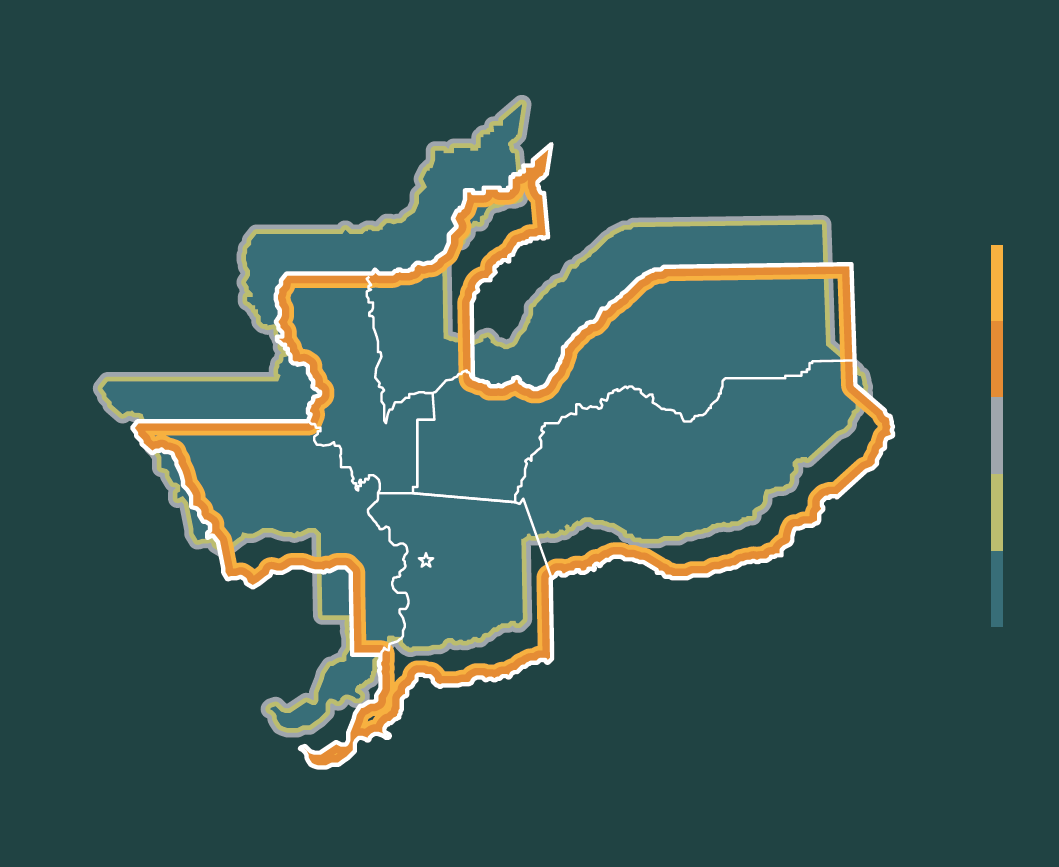
Valley Vision is extremely pleased to report that the Economic Development Administration (EDA), U.S. Dept. of Commerce, has officially approved the Greater Sacramento Region’s Comprehensive Economic Development Strategy (CEDS), known as the Prosperity Strategy. It will be current for five years and provides eligibility for EDA funding for its many programs supporting regional economic resiliency, innovation and recovery, across the six-county region.
The CEDS is the culmination of two years of intensive collaborative research and strategic planning led by a partnership of the Greater Sacramento Economic Council, the Sacramento Metro Chamber of Commerce, the Sacramento Area Council of Governments (SACOG), and Valley Vision, with funding support from EDA. Building upon a call to action from an assessment of the regional economy by the Brookings Institution in 2018, the CEDS contains six core strategies and related initiatives, within a framework of inclusive economic development to drive equitable and sustainable prosperity. The CEDS also follows upon the foundation built by the previous CEDS, Next Economy.
We’re grateful to the more than 400 community leaders and representatives across the region who contributed their valuable ideas, expertise and guidance throughout the process, including members of the CEDS Steering Committee. The CEDS is a living document, meant to be updated to reflect current economic conditions, to guide investments toward impactful and meaningful outcomes, and to track progress toward key initiatives and goals. Given the realities of COVID-19, the partners have created a short term “Bridge to Action” for inclusive economic recovery and growth – The Path Forward.
The partners along with the Sacramento Asian-Pacific Chamber of Commerce are committed to advancing the wellbeing of the region through collaborative and shared implementation of the CEDS. EDA will continue to be a valued partner in this process. EDA’s approval letter stated: “We commend your organization and your regional partners for this excellent effort, and we look forward to working with you as you continue to address the economic development planning and implementation needs of the region.” Please click here for the full CEDS and the Path Forward, and contact Valley Vision if you need information on EDA applications and/or letters of support. We welcome your participation and input, so please be in touch as we all work together for the future of our region.
Trish Kelly is Valley Vision’s Managing Director, leading its food, agriculture, workforce, and broadband initiatives.
Our Path Forward
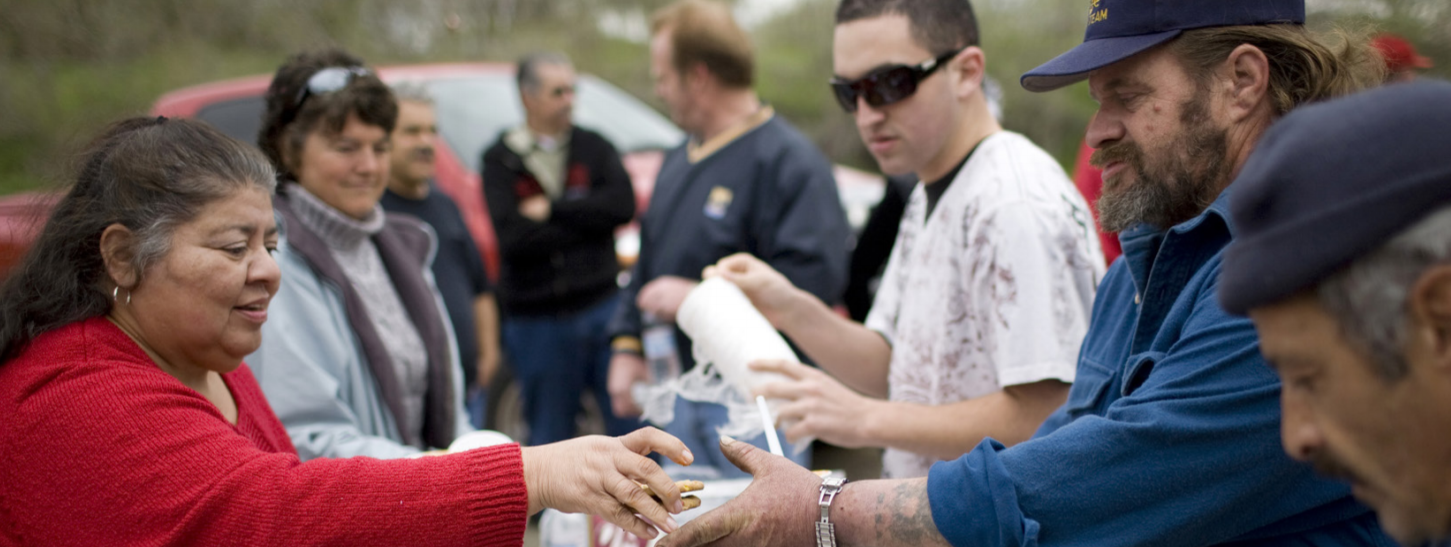
Last week, a friend and colleague wrote me about George Floyd’s killing and its aftermath. She offered a different quote by Dr. Martin Luther King, Jr. than we referenced in our last Vantage Point, and reminded me that his “messages around economic justice are often overlooked, yet inseparable from social justice solutions.”
Valley Vision is a “triple bottom line” organization, which is a wonky way to say that we hold three co-equal priorities in our work: equity, the economy, and the environment. Our work strives to balance the interconnections between these three priorities, and recognizes that they are inseparable from each other.
In late May, Valley Vision and three partners launched “Our Path Forward: The Prosperity Strategy,” which is our region’s first intentionally inclusive economic development strategy. The strategy resulted from the findings of the 2018 Brookings Institution report, which made clear the entrenched inequities in our communities – people who are disadvantaged by income, education, employment, connectivity, and opportunity. These inequities cut predominantly along lines of race and ethnicity, and also exist across and within urban and rural communities.
It was clear, in the Brookings report, that even as we seek a strong and healthy economy built on our existing strengths, ensuring that opportunity is truly available to all is absolutely imperative for people and the communities in which they live as well as for the long-term strength and resilience of our economy.
There are many resources about “Our Path Forward” online, including the six core strategies that will allow us to scale business, enable people, and build place. You can visit the website, view the webinar with which we launched the plan, read the 13 page summary, and digest the 150 page Comprehensive Economic Development Strategy which has been submitted to the U.S. Economic Development Administration (EDA) and qualifies our region to apply for EDA grant funds for the next five years.
Dr. King said, of economic justice, that “The dignity of the individual will flourish when the decisions concerning his life are in his own hands, when he has the assurance that his income is stable and certain, and when he knows that he has the means to seek self-improvement.” The Prosperity Strategy is the Capital Region’s roadmap toward that definition of economic justice, and Valley Vision is committed both to its own role in seeing it through, and as well to the conversations and partnerships across our communities that will enable us all to succeed.
Meg Arnold is Interim CEO of Valley Vision through June 30.
Guest Blog: SMUD CEO Arlen Orchard On Ensuring Sustainable Communities
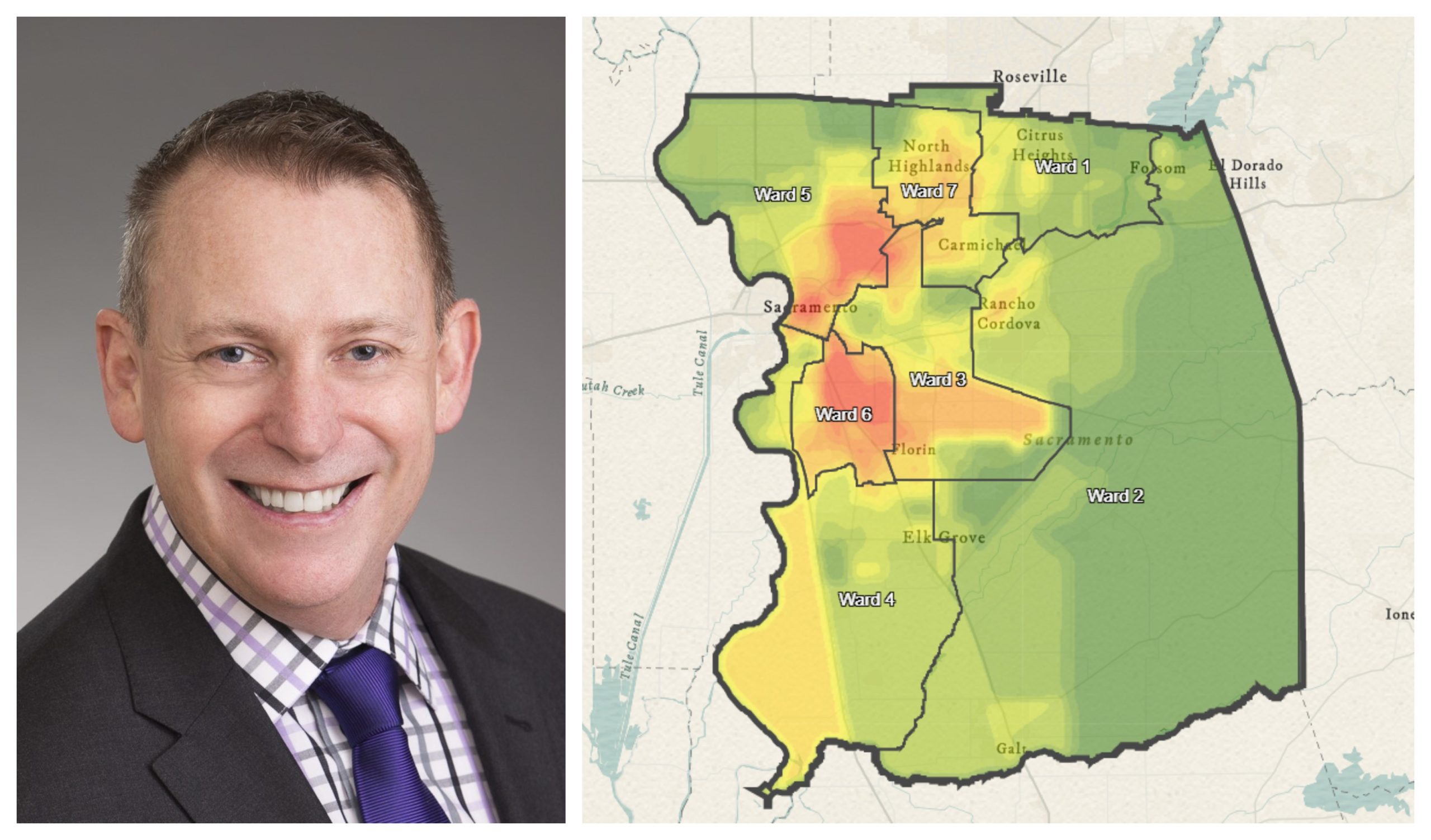
COVID-19 has changed life as we know it, and our fellow citizens living in historically underserved communities are being hit especially hard. As we re-emerge from this crisis, it is more important than ever to pool our energies and resources to help everyone get back on their feet.
SMUD is proud to partner with Valley Vision to tackle some of the region’s most pressing issues, including improving the quality of life of those living in historically underserved neighborhoods and communities.
Along these lines, we recently published a Sustainable Communities Resource Priorities Map on our website that will help SMUD, other businesses, public agencies and non-profits identify and support the communities most in need in the Sacramento region.
We worked with a number of partners, including UC Davis, Sacramento Metropolitan Air Quality Management District and Sacramento Area Council of Governments, to ensure that the interactive map contains voluminous data from a wide range of sources.
The interactive map’s critical data layers include education, public transportation, tree canopy, health care, employment opportunities, electric vehicle charging, food deserts, what neighborhoods are most vulnerable to climate change, and more.
A Brookings report in 2018 found that between 2006 and 2016, Sacramento ranked in the bottom third of the nation’s largest 100 metropolitan areas in composite rankings of growth, prosperity and inclusion. Thirty-four percent of our residents live in households that don’t earn enough to cover basic expenses.
Such inequities were preventing Sacramento from realizing its potential, the report said, recommending urgent action to address our racial and ethnic disparities in education and skills. We at SMUD were aware of the problems before – and had done a lot of good things in supporting economic and environmental sustainability over the years. But the Brookings report convinced us we needed to take a more strategic, collective and inclusive approach.
We heeded the call to action by developing SMUD’s Sustainable Communities initiative in late 2018. Sustainable Communities is designed to support environmental equity and economic vitality in all communities in our region, with special attention given to historically underserved neighborhoods.
We’re supporting not only cleaner energy and carbon reduction in these neighborhoods, but partnering with policy makers, transit leaders, technology companies, heath care providers and community-based organizations to maximize our collective impact and solve real problems for real people.
SMUD obviously can’t solve these problems on our own, which brings me back to the Sustainable Communities Resource Priorities Map. This mapping tool will help SMUD and our community partners make community investment decisions based on good data and direct meaningful change in at-risk communities. It also helps all of us measure the progress of our efforts in these neighborhoods and determine the effectiveness of the investments over time.
Given the projected economic impacts resulting from the pandemic and the disproportionate impact on the poor and communities of color, the map’s rollout is especially timely. SMUD is happy to host and commit resources to update this important community tool on an ongoing basis. The next few years will be especially challenging for the residents of our region and especially for those living in our disadvantaged communities. The need to join together, to collaborate, and to invest in these neighborhoods has never been more pressing. SMUD is honored to serve such a vibrant, diverse community, and we’re committed to not just helping power Sacramento out of this crisis, but to building a more sustainable future for generations to come.
Arlen Orchard is CEO and General Manager of the Sacramento Municipal Utility District (SMUD) and a Valley Vision board member.